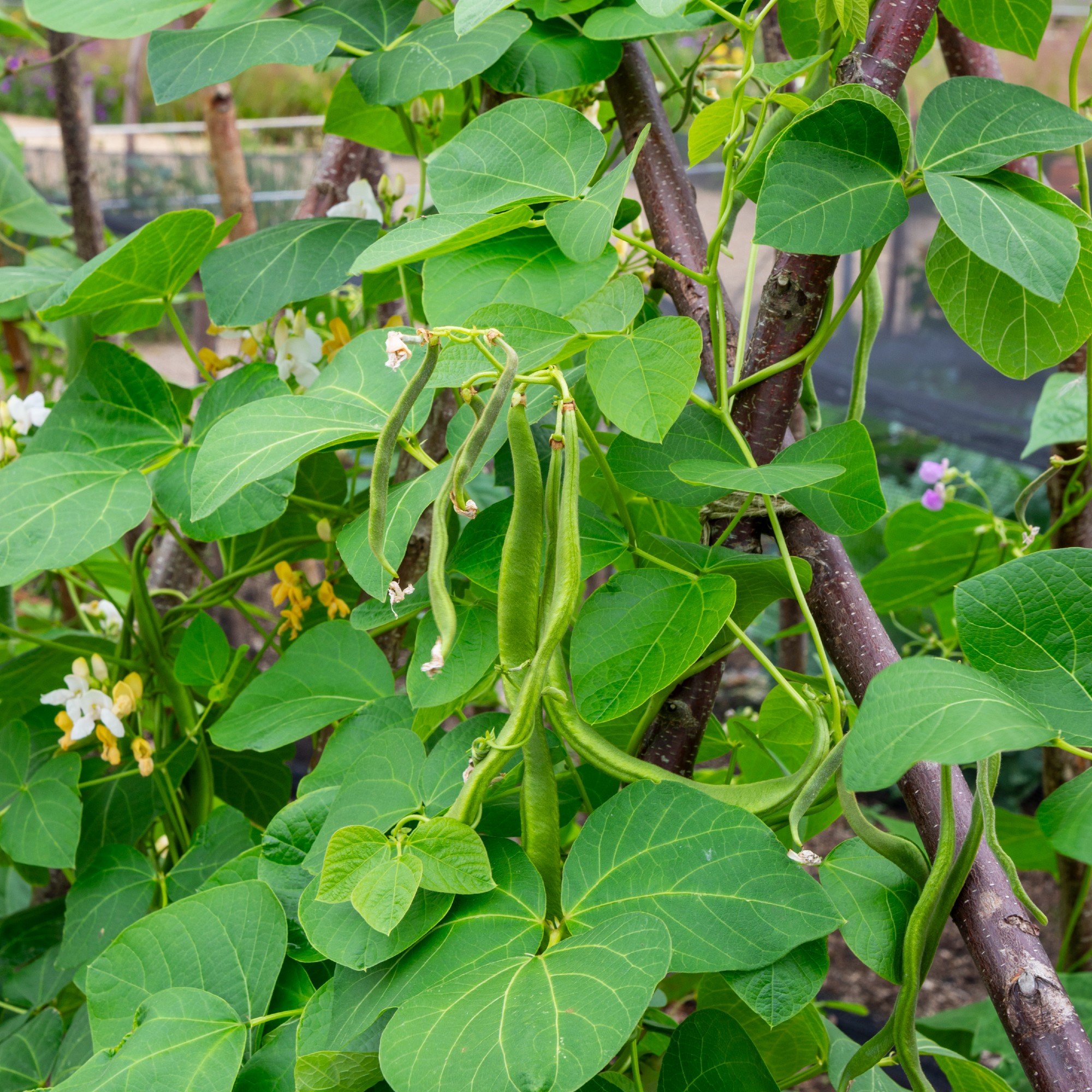How to grow runner beans in pots – it's one of the easiest and best plants to grow in small gardens
Experts share a step-by-step guide to growing runner beans in pots for an early harvest


If you’re planning on growing your own produce, runner beans are a great place to start because they are incredibly easy to grow. And even if you don’t have a lot of garden space, there are ways to grow runner beans in pots, making them the perfect small garden idea due to their vertical growing habits.
But even if you do have the space to grow them outside in the garden, planting your runner beans in pots comes with the benefit of starting them early indoors and therefore harvesting sooner. Even though runner beans are easy to grow, they are warm-loving plants sensitive to cold so May is usually the best time for when to sow runner beans.
But by growing them in containers, you can get a head start and plant them as soon as March or April. But there are a few things to keep in mind when choosing to grow them this way.

How to grow runner beans in pots
If grown in pots indoors, whether that’s on a sunny windowsill or a greenhouse, runner beans are one of the best things to plant in April.
‘If you wish to harvest runner beans early then start by planting them indoors,’ says John Clifford at Gardenstone. ‘Runner beans don’t grow well in cold conditions so if you wish to sow them early then use small pots and place them on a windowsill or greenhouse. Once the weather has warmed, the plants can be moved outdoors into containers.’

John Clifford is a director of Gardenstone, a leading garden landscaping retailer based in the UK. With over 30 years in the gardening industry and continual work alongside The National Trust, John has amassed an extensive range of gardening and planting knowledge. Alongside his younger son, John has built a strong reputation for Gardenstone as a trusted source for both high-quality garden products and expert gardening advice.
They can be moved outdoors from May onwards, as long as any danger of the last frost has passed.
Petar Ivanov, Fantastic Gardeners' gardening expert, adds, ‘Runner beans are a productive and beautiful container crop. They can also make a fabulous statement outside a front door.’
Sign up to our newsletter for style inspiration, real homes, project and garden advice and shopping know-how
Perfect for growing vegetables in a small garden, this is everything you need to know about how to grow your vegetables in pots.

Petar Ivanov is one of the company's top-performing experts and manages over six teams of gardeners, delivering stunning landscape results and fostering a deep connection with nature through his work.

What you’ll need
- Runner bean seeds like the 'Prizewinner' from Thompson & Morgan
- A large pot with minimum 20-litre capacity like this one at Amazon
- Multi-purpose compost like this one from Miracle-Gro at Amazon
- Support canes like these at Amazon
- Liquid tomato food like this one from Levington at Amazon – 'To increase your crop, feed them with liquid tomato food once every two or three weeks after the plant starts flowering,' Petar recommends.
Step-by-step guide
As previously mentioned, the best time to start the growing process and sow your runner bean seeds indoors in pots is from March to April, which means you’ll be able harvest in July.
‘If you sowed your seeds indoors during early spring then they should be ready for harvest during July,’ John says. ‘Runner beans take an average of 12 weeks to harvest.’

1. Choose your pot well
Start by picking out the right-size pot to accommodate both the plant’s long roots and moisture needs.
‘Runner beans require lots of watering so a large pot prevents the compost from drying out. It is best to use a pot that is a minimum of 20 litres, they must be large enough to allow space for their long roots. This will allow room for three to four plants as well as support canes,’ John says.
2. Fill the pot with soil and set up support

‘Fill the pot with multi-purpose compost. Multi-purpose compost is ideal for runner beans as it provides a rich amount of nutrients necessary for a successful harvest. Compost is key for improving moisture retention which is important as runner beans require a high amount of water,’ John says.
Then add the supports. Runner beans are a climbing plant, which is why they need some form of support to attach themselves to.
‘Push four canes deeply into the soil. As the beans grow, manipulate them around the cane to encourage upwards growth,’ John says.
Petar adds, ‘Runners need a good tall support to climb up, for example, a wigwam. To make it, use canes or tall branches.’
3. Plant the runner beans
Then plant one runner bean per cane. ‘Place a runner bean at the base of each cane,’ John says.

4. Water them often
Runner beans are a thirsty species so they need to be watered regularly, ideally daily.
‘Runner beans are extremely thirsty so they will require watering on a daily basis, if not multiple times a day,’ John says.
Petar recommends a trick how to find out if your plant needs watering, ‘These crops grow best with lots of water and you'll need to check if they need watering by feeling the top of the soil at around a depth of 2,5 to 5 centimetres. It should be damp but they’ll probably need watering every day, particularly when the weather is warm.’
Be careful not to let them dry out as this could lead to stringy beans.
And this should set you up for success and lots of runner beans to cook with.

Sara Hesikova has been a Content Editor at Ideal Home since June 2024, starting at the title as a News Writer in July 2023. She is now also the Ideal Home Certified Expert in Training on Furniture, and so far has tested over 150 different sofas.
Graduating from London College of Fashion with a bachelor’s degree in fashion journalism in 2016, she got her start in niche fashion and lifestyle magazines like Glass and Alvar as a writer and editor before making the leap into interiors, working with the likes of 91 Magazine and copywriting for luxury bed linen brand Yves Delorme among others.